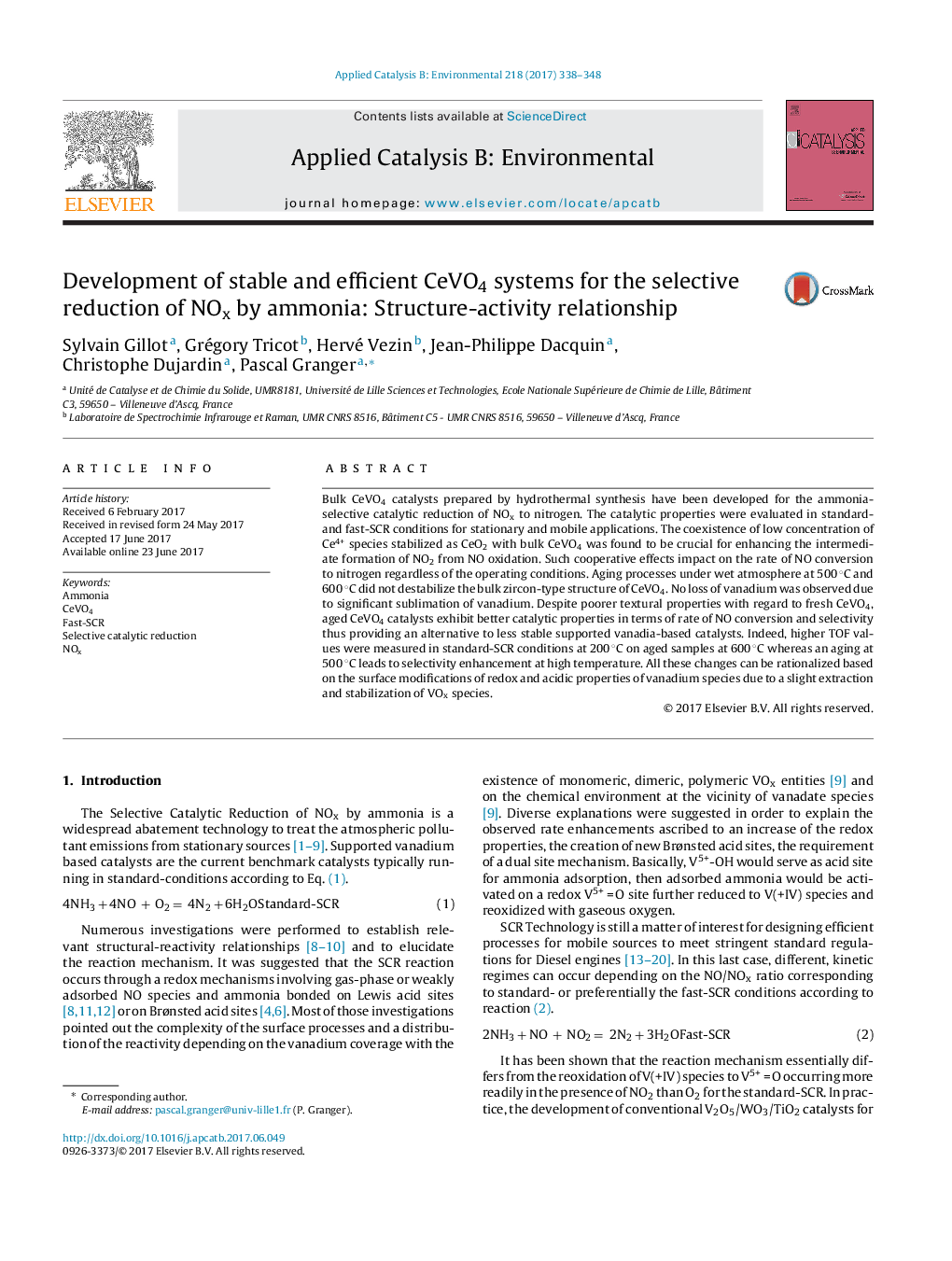| Article ID | Journal | Published Year | Pages | File Type |
|---|---|---|---|---|
| 6453751 | Applied Catalysis B: Environmental | 2017 | 11 Pages |
â¢Development of more thermally stable and selective CeVO4 systems than current vanadia-based catalysts.â¢Cooperative effect of CeO2 and CeVO4 in the standard ammonia-SCR.â¢Greater stabilization of V(+V) in the zircon-type structure of CeVO4 avoiding the formation of unstable V2O5.
Bulk CeVO4 catalysts prepared by hydrothermal synthesis have been developed for the ammonia-selective catalytic reduction of NOx to nitrogen. The catalytic properties were evaluated in standard- and fast-SCR conditions for stationary and mobile applications. The coexistence of low concentration of Ce4+ species stabilized as CeO2 with bulk CeVO4 was found to be crucial for enhancing the intermediate formation of NO2 from NO oxidation. Such cooperative effects impact on the rate of NO conversion to nitrogen regardless of the operating conditions. Aging processes under wet atmosphere at 500 °C and 600 °C did not destabilize the bulk zircon-type structure of CeVO4. No loss of vanadium was observed due to significant sublimation of vanadium. Despite poorer textural properties with regard to fresh CeVO4, aged CeVO4 catalysts exhibit better catalytic properties in terms of rate of NO conversion and selectivity thus providing an alternative to less stable supported vanadia-based catalysts. Indeed, higher TOF values were measured in standard-SCR conditions at 200 °C on aged samples at 600 °C whereas an aging at 500 °C leads to selectivity enhancement at high temperature. All these changes can be rationalized based on the surface modifications of redox and acidic properties of vanadium species due to a slight extraction and stabilization of VOx species.
Graphical abstractDownload high-res image (106KB)Download full-size image
